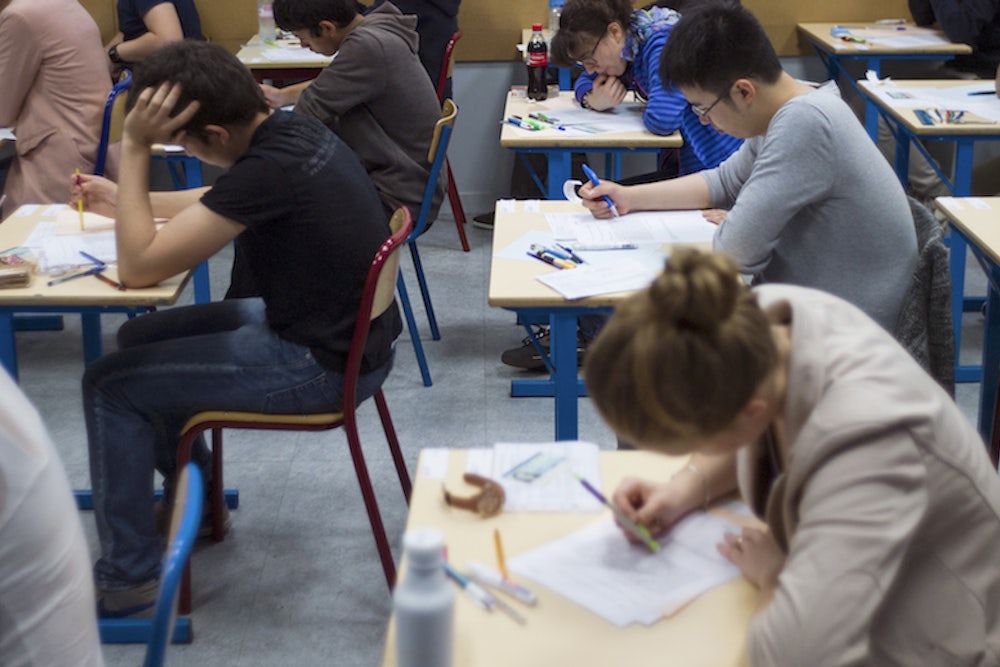If a college degree is becoming as essential as a high school diploma was a generation ago, why not make college free? This was the essential question behind an ongoing experiment called the Kalamazoo Promise, launched in Kalamazoo, Michigan, in 2005. Any student who has attended Kalamazoo public schools since ninth grade or before can use Promise funds, which come from private donors, to pay all or most of the tuition at any of Michigan’s public universities or community college. The program has inspired upwards of 30 similar efforts in cities around the country, and the idea has seeped into the policy debate: Tennessee’s Republican governor recently suggested making two years of technical or community college available to any student, free of charge.
But how well do promise programs work? A study on the impact in Kalamazoo from 2005 through 2008, published this week in the journal EducationNext, is one of the first to seek an answer. By the third year, when the program was in full swing, the results were encouraging—if not staggeringly so.
The prospect of a college education seemed to inspire students to show up, sit through class, and behave, according to the study, by Timothy J. Bartik and Marta Lachowska of the nonpartisan W.E. Upjohn Institute for Employment Research. By the 2007-2008 school year, the average time a student spent suspended was down 1.8 days, and the likelihood that he or she completed any credits was up 9 percent. GPA’s rose slightly overall (though not by a statistically significant amount), and starkly for African-American students: by 0.2 points in year two, 0.3 points in year two, and 0.7 points in year three. The authors note that these numbers may have continued to grow since 2008.
Though the Promise appears to have changed the culture of the Kalamazoo school district, it is hardly a silver bullet. Here's one of the most interesting observations in the study:
Our overall results are consistent with the idea that students do not fully understand how to change their behavior to obtain better outcomes in some areas, such as course grades. If this is the case, even strong incentives for higher academic performance may not produce notable improvements in key outcomes. In our study, students may have understood that the opportunities presented by the Promise depend on displaying better behavior in school, and therefore reacted to the Promise in ways that resulted in fewer students spending time in suspension. Yet the students may simply not know how to achieve a higher GPA.
Are promise programs, which use the gift of college to motivate students, but don’t necessarily teach them “how to achieve a higher GPA”—or, in general, how to get there—the best use of the funds it takes to run them? It’s a policy question worth literally millions of dollars.
“I don’t have an opinion one way or the other right now,” said Gabriella Gonzalez, a sociologist at the RAND Corporation who conducted a study of the promise program in Pittsburgh, Pennsylvania, and is in the midst of evaluating the one in New Haven, Connecticut. “There are definitely a lot of students who’ve gone on to college who wouldn’t have… They’ve had a great impact in changing culture. But I would feel more confident if there was a cost-benefit analysis, and we haven’t been able to do that yet."
Promise programs can inspire school districts to invest in tutoring and college counseling, said Michelle Miller-Adams of the Upjohn Institute, reinvigorating teachers with the knowledge that opportunities await their young charges. “What has been transformative is that it’s so simple, and there’s so much money,” she said. “It’s less powerful to say, go to school here and we’ll make sure you meet with a guidance counselor and know what aid you qualify for. That’s as valuable, maybe even more valuable, but around getting people in the community excited, that’s a less powerful message.”
In Gonzalez’s study of the Pittsburgh Promise—which, unlike Kalamazoo, has an eligibility cut-off of a 2.5 GPA—she found: “Focus group students consistently reported that Promise funds motivated them to strive for a 2.5 GPA, attend school regularly, and seek postsecondary education. In addition, they reported that their parents pushed them to attend school and meet the 2.5 GPA requirement that would make them Promise ready.” The Promise had also increased the number of students enrolling in college, she observed, and seemed to help them stay in school while peers without funding dropped out at higher rates.
In another ongoing study of a promise program, in El Dorado, Arkansas, Gary Ritter of the University of Arkansas compared the Arkansas Benchmark Exam scores of elementary and middle school students who were eligible for the scholarship to those of kids in neighboring townships. El Dorado students who were in third grade when the Promise was announced had pulled ahead of their peer group by 14 points in math and 12 points in literacy four years later.
It is hard to compare promise programs, since each one is a little different than the next. Some fund private degrees, others only public. Some, like Kalamazoo and El Dorado, don’t have a GPA requirement, which they say would confine the benefits to kids who were likely already college-bound; others, like Pittsburgh and New Haven, argue the GPA requirement is crucial to motivating students. Most of the programs are aimed at revitalizing communities where the economy is down. Though the RAND and Upjohn studies leave some question marks about the programs' academic benefits, they do note that declining enrollment in the public school systems has stabilizes or even reversed. Advocates suggest the idea will boost property values over time, and will reinvigorate local economies as the "promise scholars" return home, college educated.
In Kalamazoo, “there are real estate signs that say, ‘Promise Eligible House,’” said Timothy Bartik of the Upjohn Institute. Though the data is far from conclusive, “it’s hard to overstate the effect on the atmosphere in the community.”
This post has been updated.
